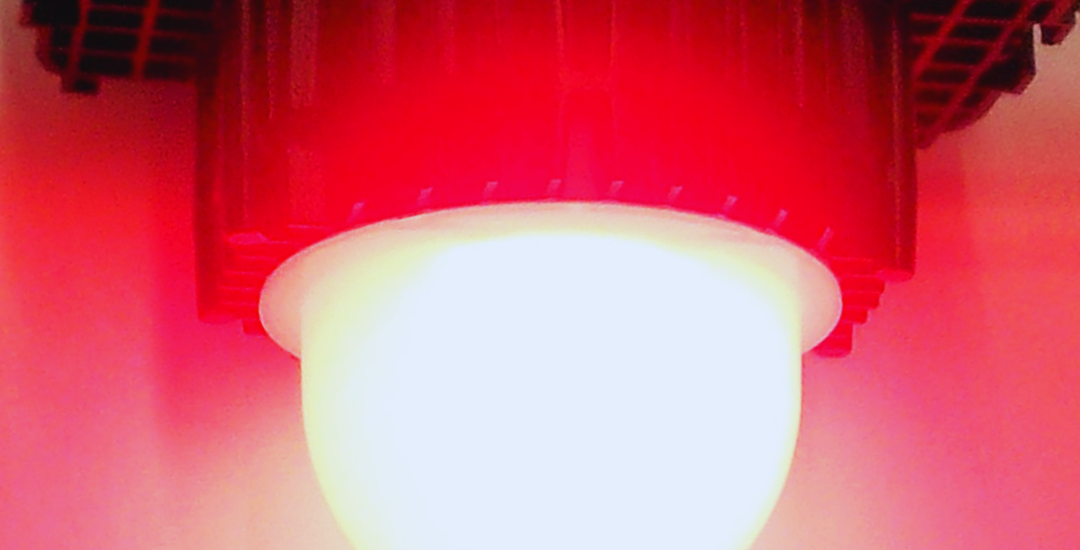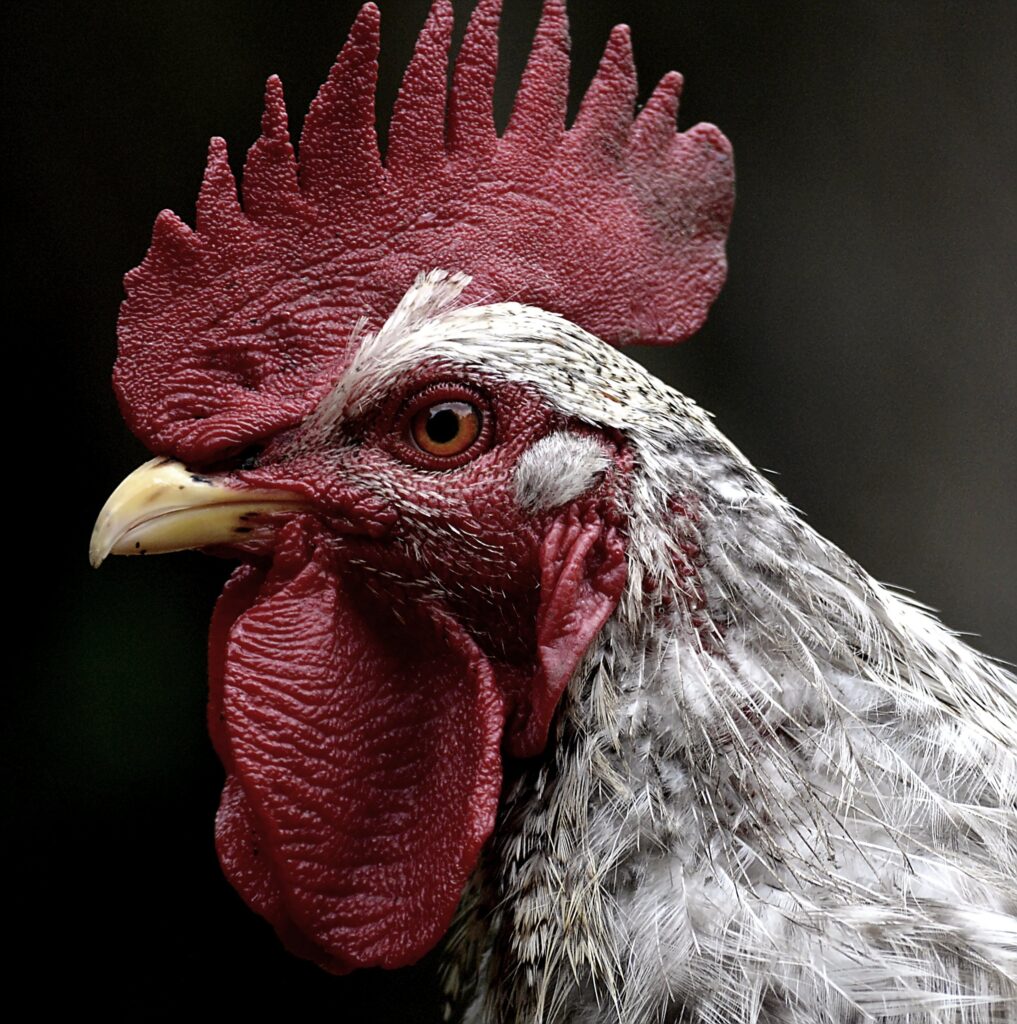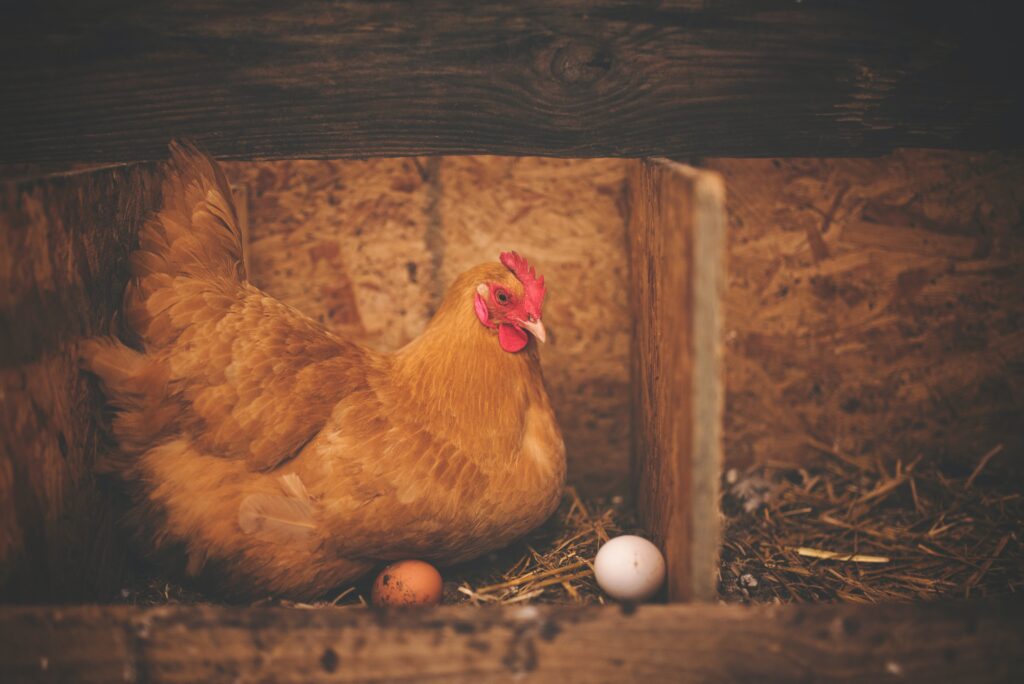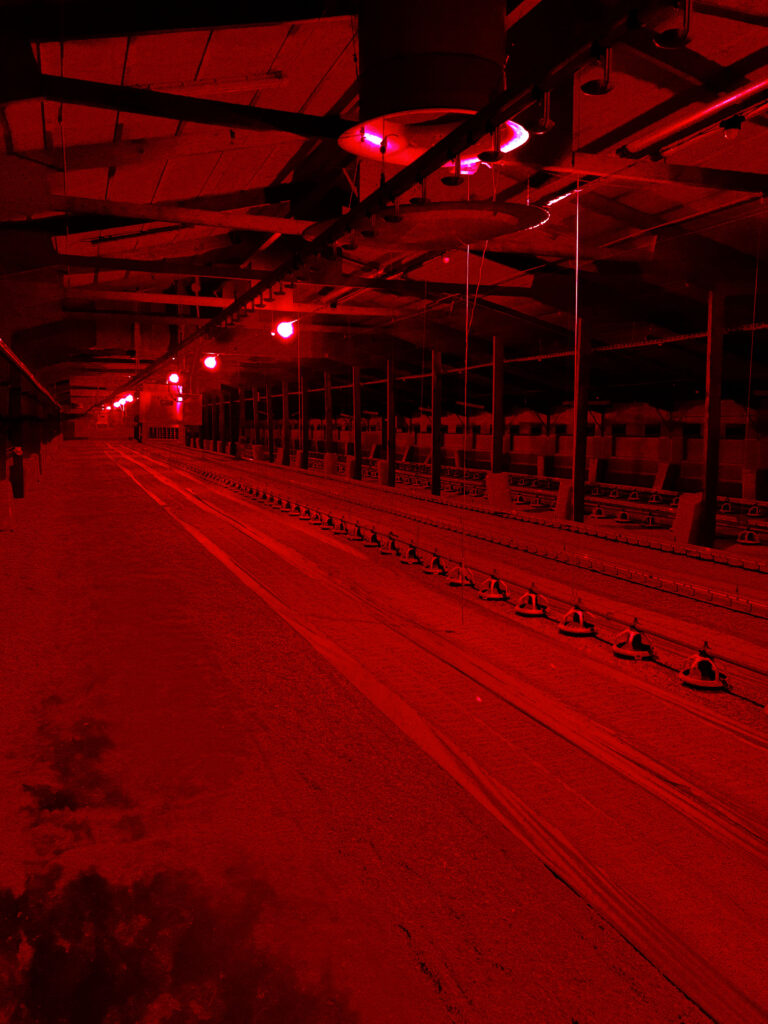- 30 March, 2023
- Posted by: Marketing Manager
- Category: Blog, tips and know-how

Red lighting in poultry at a glance
The poultry industry has witnessed significant growth and innovation over the years, with scientific research and technological advancements playing a crucial role in shaping modern production practices. Among the various factors that influence the health and productivity of poultry, lighting stands out as a crucial element in the rearing environment that is very often overlooked. Uniform, flicker free poultry-specific lighting is slowly becoming the industry norm in developed countries, but monochromatic light exposure and treatment is still fairly rare and somewhat exotic. Red lighting, in particular, has garnered substantial attention and debate, with numerous claims surrounding its benefits and drawbacks in poultry farming. As the industry continues to evolve, it is essential to dispel the myths and shine a light on the facts related to red lighting in poultry production. This article aims to provide an in-depth analysis of the research and evidence supporting or debunking the claims associated with red lighting, empowering poultry farmers to make informed decisions and optimize their operations.
Red lights decrease aggression in chickens – fact or myth?
A common perception in the poultry industry is that red light is used to lower aggression in chickens, creating a more harmonious environment within the flock. However, it is crucial to understand that red light does not inherently decrease aggressive behaviours. It masks one of the triggers that often incite aggression – the sight of blood. One look at blood can lead to a frenzied pecking behaviour, escalating to cannibalism and resulting in significant damage to the flock. Red light’s primary function in this context is to flood the barn with red wavelengths, making everything appear red and rendering blood indistinguishable from other dark colours. Consequently, this prevents the frenzy response from being triggered in the chickens.
While using red light to mask triggers can be an effective last resort to mitigate disaster, it is important for poultry farmers to address the root causes of aggression rather than solely relying on this technique. Identifying and resolving underlying issues that lead to aggressive behaviours (such as boredom, or mineral deficiencies) will result in a more sustainable and holistic approach to poultry management. Keeping red lights in a shed in case of aggressive outbreaks can be a good idea for some broiler growers, but certainly not all. That being said, red light does have specific uses that can be highly beneficial to an entirely different area of poultry. Read more to learn more about the proven advantages of red light in poultry production and how to utilize it most effectively.
Red light as an effective way to increase production in layers
In contrast to the misconceptions surrounding red light and aggression, research has demonstrated that red light can positively impact layers, particularly with regard to sexual maturation and egg production. Studies have found that red light can accelerate sexual maturation in laying hens by 7-14 days, subsequently boosting egg production and egg mass. In their paper, “The relationship of spectral sensitivity with growth and reproductive response in avian breeders (Gallus gallus),” Yang et al. provide evidence for this phenomenon. Similarly, Baxter et al.’s study, “Red light is necessary to activate the reproductive axis in chickens independently of the retina of the eye,” supports these findings.

The positive effects of red light on layers can be attributed to its interaction with the chicken’s metabolism and endocrine system. Light plays a critical role in avian physiology, as it is absorbed through the comb and can modulate the endocrine system depending on the light’s spectral properties. Red light, specifically, has been shown to stimulate the reproductive axis in chickens, even without direct interaction with the retina of the eye (i.e. through the comb alone).

Understanding the significance of these effects is crucial for poultry farmers aiming to optimize egg production and overall flock health. By leveraging red light in a targeted manner, producers can enhance the efficiency of their operations while maintaining the well-being of their layers. As the science continues to evolve, it is essential for the poultry industry to stay informed of any new developments to maintain a comfortable profit margin in a highly competitive field.
Increasing broiler mobility with red lights – is it worth it?
Earlier studies presented evidence that suggests that red light may also contribute to increased mobility in poultry, which could have significant implications for the overall health and well-being of the flock. Enhanced mobility is particularly crucial for breeds prone to leg issues, such as Ross 308, as it can potentially help to prevent the development of leg disorders and improve the birds’ overall quality of life.
Leg disorders are a major concern in poultry production, particularly among fast-growing breeds. These disorders can lead to reduced mobility, increased mortality, and compromised welfare. The use of red light has been shown to stimulate physical activity in birds, resulting in better muscle development and stronger legs. Consequently, this can help to mitigate the risk of leg disorders and improve the overall health of the flock.
Moreover, increased mobility in poultry can have a domino effect on other aspects of their well-being. For instance, more active birds are associated with less clustering and better litter quality. Additionally, increased physical activity can contribute to better cardiovascular health, reduced stress, and a more robust immune system. As a result, utilizing red light in poultry production may lead to long-term benefits for both the birds and the producers.

On the other hand, the more energy a bird uses, the less weight it will gain – so a delicate balance needs to be struck here for red light to be effectively used in broiler production (for reasons other than mitigating aggressive outbreaks of cannibalism). Enriched environments result in increased mobility as well, so red light isn’t the only way to achieve a desirable outcome of higher leg health in a flock. While it is a proven effect, it alone might not be enough to warrant the purchase of a set of red lights.
Red lighting for poultry production – should you get it or not
To sum it up, the use of red light in poultry production has the potential to provide valuable benefits, particularly for layers and breeders, but also for broiler productions experiencing issues with aggression and cannibalism (and potentially to increase mobility as well). As more research emerges on the subject, poultry farmers should consider incorporating monochromatic light into their management practices when appropriate, in order to capitalize on its potential benefits (click on the link to read our article on the benefits of blue lights).
However, it is essential for poultry farmers to be aware of the limitations and potential downsides of red light as well. For instance, the use of red light should not replace other essential husbandry practices such as providing a balanced diet, maintaining proper stocking density, and ensuring good sanitation. The combination of these factors, along with an optimized lighting strategy, is crucial for achieving the best possible outcomes in poultry production.
Furthermore, the effectiveness of red light may vary depending on factors such as the specific breed, age, and environmental conditions of the birds. Therefore, it is crucial for producers to closely monitor their flock’s response to red light and make adjustments as needed. This may involve experimenting with different light intensities, durations, or combinations of light spectra to determine the optimal lighting strategy for their specific operation. We always recommend to install 24 monitoring systems and have actionable data to guide your management decisions (for more information check out our ALIS Sense range of sensors, that seamlessly integrates with ALIS lighting systems and delivers user-friendly automated reports on key parameters in the shed).

Red light has the potential to positively impact various aspects of poultry production, from mitigating aggression to promoting sexual maturation and egg production. To harness the benefits of this innovative lighting technology, we at Greengage offer several lighting solutions. Our ALIS red lights have been designed to deliver optimal performance and are backed by extensive research and crafted through meticulous development. By reaching out to Greengage, you can access expert guidance on implementing red light technology tailored to your specific needs, ensuring the best possible outcomes for your flock’s health and productivity. Contact us for a free light plan and revolutionize your poultry production with the help of our cutting-edge ALIS red lights today.